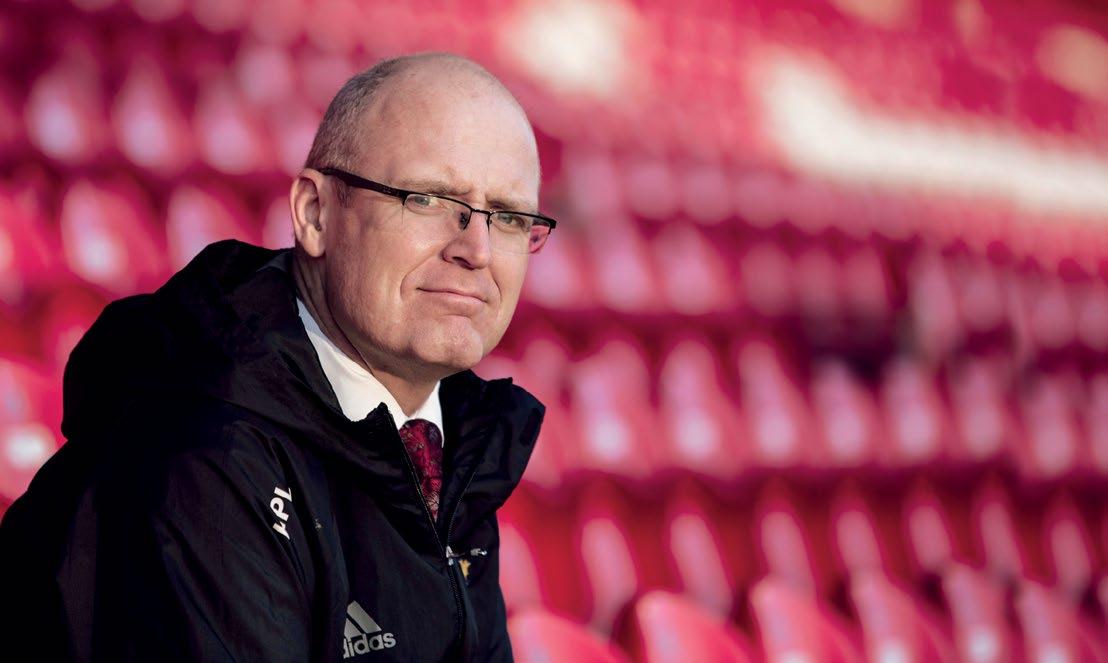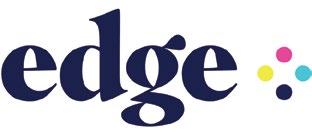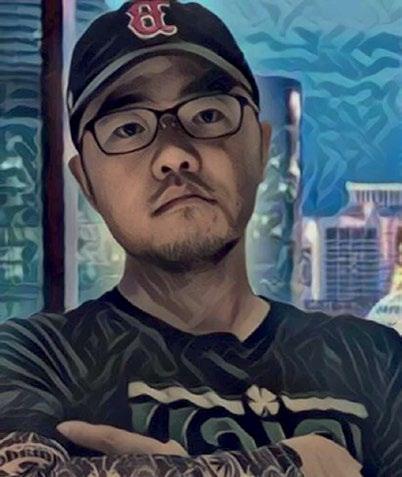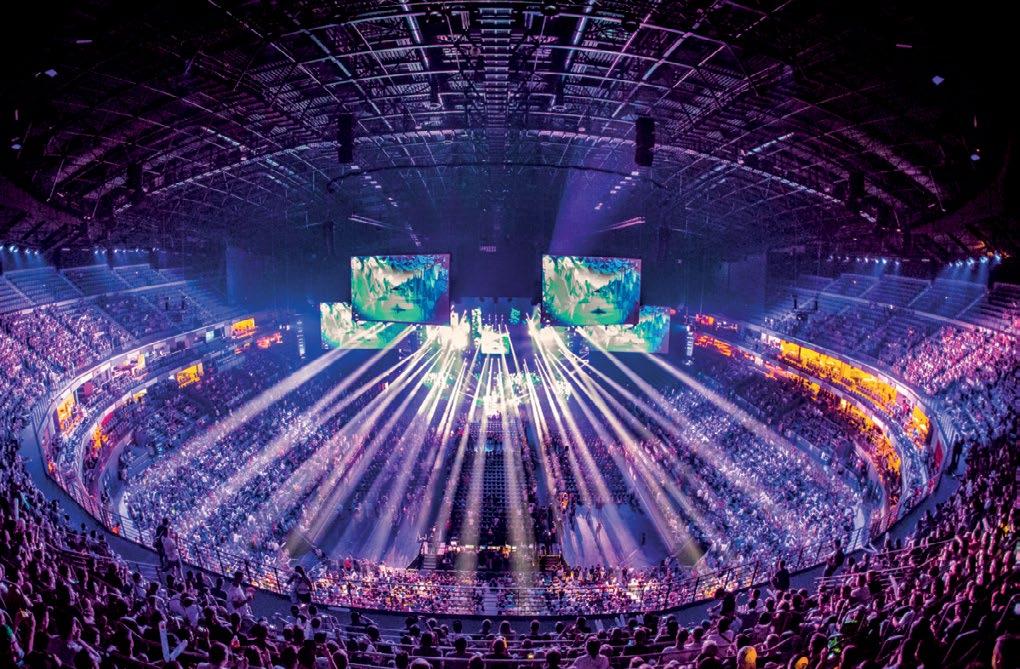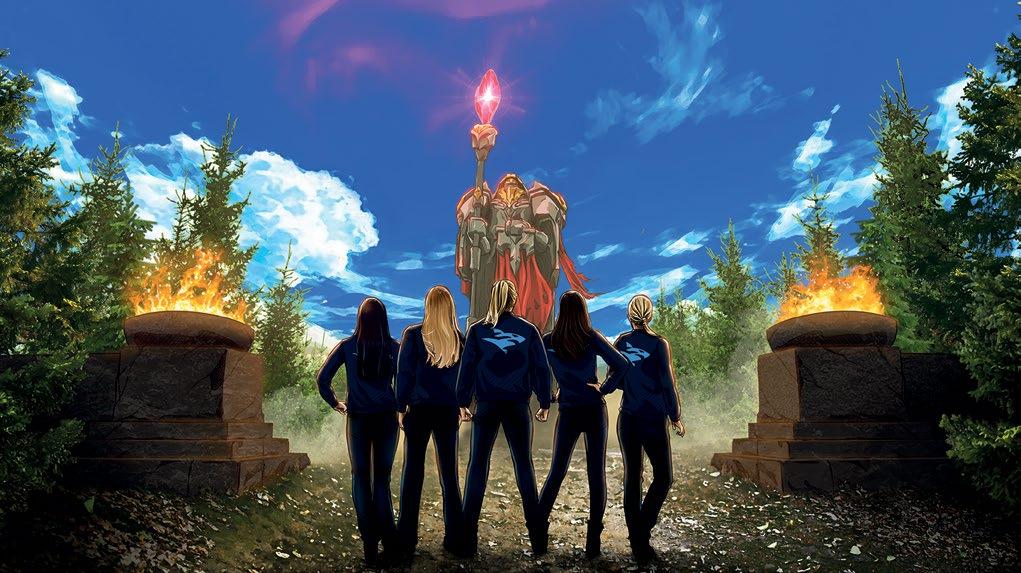
12 minute read
We Are Nations
from The Esports Journal
by SBC Global
A conversation on branding
AUTHOR Andrew Hayward @ahaywa
s the world’s largest esports merchandising company, We Are Nations has worked with a wide number of team brands, including G2 Esports, OpTic Gaming, Origen, and more. Over time, collaborating with so many major esports brands sparked Nations to begin its own internal brand strategy and licensing direction. A
We Are Nations is currently working on an initiative to help organisations hone their brand voice and strategy - and while the team isn’t quite ready to spill all of the beans, they did share some insights on their philosophy on branding with The Esports Journal. Here’s what Nations’ Trenton Pierson, and Philip Bartko, who make up the company’s brand strategy group, had to say on the topic.
Pierson: Ever since we started with Nations, we’ve always been this voice of making sure that there is an actual brand direction. What are your core principles to what your brand is? Even when we went over to Riot for the League of Legends Championship Series (LCS), it got reinforced by working with a lot of different esports organisations about the importance of what a brand strategy can actually do. There’s examples all over the place of how brands, big or small, can get lost in the shuffle if there’s nothing to cling to. That thing is the brand voice or brand strategy. Here’s a great example of what we’re looking at here. You can compare other organisations to a team like 100 Thieves. They get brought up all the time, like: “We want to do what 100 Thieves does.” So we ask these teams: What do you see 100 Thieves doing that makes them so successful? A lot of the time, what they lack in that response is really the fundamental idea that 100 Thieves has defined its brand, given itself brand guidelines, and have followed those brand guidelines from the minute they started. They’ve followed the same exact pattern about how they interact with everything, and they’ve really pushed their core principles on all of the projects that they do.
Bartko: Last year, the most in-depth experience I had was working with the LCS. I got to go into all of their houses, see what they were working with, and work directly with their brand guidelines. Without throwing anyone under the bus or anything like that, the brand guidelines across the board were either nonexistent or not terribly hashed out.
By no means am I saying that Trenton and I are trying to create a branding agency. But one of the things that I wrote in a general assessment about the LCS teams is where they needed help. They needed to go to an outside agency or bring in a professional with experience to help them identify what
Trenton Pierson Senior Vice President of Strategy
their brand is and to help them establish core values.
We’ll use 100 Thieves again as a good example. 100 Thieves is always pointed at as “streetwear” or something like that, but ultimately it’s really, really good merchandise with a really, really strong and direct brand voice behind it. It supports marketing and the merchandise is supported by marketing. Watching and paying attention to who’s doing it right, and finding out how, we can (to a degree) help teams establish what they need to support them in that brand vision - what is going to help them overall to promote their vision and experience.
One of the companies that was working on a brand voice and vision that I liked, and they recognised this in the throes of working with us, was FlyQuest. They might not be the biggest example, but they have a vision and they have core values, and they created a deck that really showed how you would promote and perpetuate that.
That has to be assisted by a lot of other factors, like marketing and a team that can really put that out there and push it, but it was good to see certain brands recognise that and start to develop
Philip Bartko Director of Franchise League Operations

something more substantial that fans could really latch onto that was unique in esports. Not just that we play esports or that we’re gamers – something more holistic. Something that targeted us as individuals outside of us just liking video games or esports.
Pierson: FlyQuest targeting and doing the campaign around the tree support - as they get kills and complete certain objectives in the LCS, they donate to help plant trees. What they’ve done with it isn’t just that campaign, but they’ve integrated that idea into everything that they’re doing. Even the jersey feel and look represents their campaign idea. The point that we’ve been trying to push as we meet with different organisations is: you can find what makes you excited as a team or organisation. Find that one thing that people can really stand behind as a banner and push it. UYU is a team that has done this very well. They chose a theme and voice early on and have used it as their guide in everything creative.
Sometimes when an organisation attempts that, they’ll try it for a week and see that they’re not getting the most attraction to it right away, and so they’ll just stop doing it - or they’ll go onto something new and it changes. It’s like you’re attempting to throw something at the wall and it just keeps falling off. Instead of picking up that same thing and driving it deeper, or re-educating your market and really standing behind a certain idea, you start to see that flip-flop back and forth. Now your fans, followers, and community don’t have that solid banner to stand behind.
An example of good brand strategy is Complexity. When they teamed up with the ownership of the Dallas Cowboys, they made the decision to interlock the two brands through color scheme and logo design. When we talk to the non-esport world, it’s so easy to show the Complexity logo and have people just get it. People recognise them and immediately correlate it to a sports team. It didn’t happen overnight, and to be honest a lot of longtime fans of the team were fairly negative about the changes. They created a strong approach to what they wanted to show the world, and pushed it in every direction. Now I would say they have one of the strongest brand voices in the market.
Bartko: It seemed to me that a lot of brands really had trouble wholly believing that their own brand was cool. It showed every time we did merchandise. It’s always like, “We want merch like this other team.” What you don’t recognise is that the other team is making good merch because they have a really good brand behind it.
I get told all day to create streetwear. What a lot of people don’t understand is that streetwear isn’t something that you create. It’s something that is adopted by cultures. I can copy streetwear, I can look at fashion trends and copy what’s big right now, but it’s really not unique. It might sell a little more or be a little more flashy, but most of the time what they’re asking me to do is break their brand to emulate something that isn’t holistically even them. foundation, to bring people back and to provide a unique experience to a fanbase.
Pierson: In esports, you see so much knee-jerk reaction to stuff. Because everything is so very new and it’s a young industry, you see a knee-jerk reaction… and then when that doesn’t go the way that they want, there’s another knee-jerk reaction to respond to the last kneejerk reaction. And it just keeps going. Where it really shows its head is you have these organisations that just have a whitewashed approach to branding: “Give me an interesting logo and we’ll just throw it up all over the place.”
Bartko: It’s hard to say that you want to target esports, because the demographic of people who watch esports and love esports is so diverse - the only thing that brings them together is esports. You have so many different kinds of people that watch esports. It’s pretty dramatically diverse, and I think that’s where a lot of companies go wrong. They try to make something that’s “gamer-y.” They pick these adjectives to simplify the demographic, and it’s just not that simple.
Pierson: We are currently working on a soon-to-come project that will hyper-target supporting organisations working in the esports industry. If you’re an outside organisation who wants to come in and collaborate with an internal esports organisation, be that through a marketing campaign, merchandise, activations, or things like that, we’re working on putting together a program that will help streamline that process.
We are under the impression that no one banner covers everybody, but pretty much everybody in the esports space can define their banner and work with other organisations to come together and create cool collaborations across the board. Part of what we’ll be doing is helping these organisations define what that means: What is their banner and where are they going with it?
3D Trophy Factory AUTHOR Andrew Hayward @ahaywa
A new vision for innovative, bespoke esports trophies
t’s only natural that esports takes cues from traditional sports, building off of established processes and norms while adapting elements to this modern, electronic world. However, esports need not be tethered to traditional methods when there are exciting and innovative new methods and options, which can better represent the dynamic nature of competitive gaming. I
One such example is trophies. While many esports tournaments have riffed off of the classic glossy metal cups and saucers seen in traditional sports, we’re seeing a greater push to award more charismatic and original designs -- ones that better represent the game in question, the publisher, the sponsor(s), or all of the above.

Belgian company 3D Trophy Factory is one of the companies leading the charge on that front, embracing techniques such as 3D printing and laser cutting to bring fresh designs to life. Formed in 2012, 3D Trophy Factory has worked across a number of industries, creating bespoke trophies for competitions, companies, and employee recognition purposes--but its esports work has significantly ramped up of late.
The company’s work has been seen in a number of high-profile events. One key example is for the most recent ESL Pro League season for Counter-Strike: Global Offensive. While previous ESL Pro League seasons featured a more traditional-looking cup design, ESL sought to present a trophy that better aligned with its recent rebranding effort. The result strikes a distinctive silhouette, a swirl of gold and black adorned with the league branding.
Another standout example is for the GLL Grand Slam: PUBG Classic for PLAYERUNKNOWN’S BATTLEGROUNDS, which spotlights the potential to utilise in-game assets to produce a trophy unlike
any other. The large, golden trophy is built in part from actual in-game assets from the battle royale shooter, with four of the familiar soldiers hoisting up a large supply crate. FaZe Clan, for their part, then hoisted the trophy onstage following their decisive win at last summer’s tournament.
“You have more freedom to actually capture the shapes that you see in the game,” asserted 3D Trophy Factory’s Business Development Manager, Zorko Huljic. “This can be captured easily in our trophies thanks to the freedom of design with 3D printing.”
Whether a client already has a vision for a trophy or needs some design guidance, 3D Trophy Factory works closely with tournament organisers to develop a bespoke award. Following an initial briefing, the company produces sketches and renders as the two parties collaborate on a shared vision. Following design approval, Huljic says that it takes between three and four weeks to deliver the final product, depending on the complexity and chosen materials.
“In terms of lead time, by using 3D printing, it’s faster than traditional metal forging or injection molding,” he explained. “Those are some of the benefits we offer in our product, but it’s really custom work. That’s really important.”
In addition to a faster turnaround than traditional methods for large-scale trophies, there’s also potential for cost savings in the process. Additionally, 3D printing is an eco-friendlier, additive process, as it builds up from nothing rather than carving away material -- plus unused material can be reused in another run. And materials are made from castor oil, a biological source that can be renewed as fast as it is used. 3D Trophy Factory delivers a level of polish far beyond what hobbyist 3D printers can manage.
Image by GLOOT


Even with such a broad array of tournament trophies in its repertoire, 3D Trophy Factory aims to expand into even more games in the future. The company can provide custom engravings, deliver variations for different tournament placements, and embed branding within any design. Huljic says the company has the experience and knowhow to handle the entire process from concept to execution, including packaging and flight cases, making it a one-stop shop for bold, modern esports trophies.

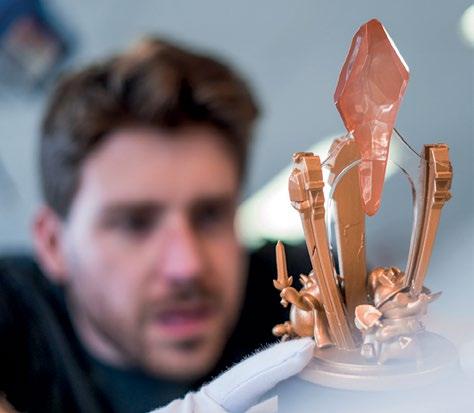
“It’s reasonably priced, but it’s a premium product,” said Huljic of the company’s work. “It’s printed with industrialgrade printers with SLS laser sintering technology.” The distinctive results have also been seen in Riot Games’ League of Legends Premier Tour in Germany, including a Live events might be postponed or cancelled in the short term due to COVID-19, but esports tournaments still rage online. 3D Trophy Factory remains operational, providing trophies that can be shipped directly to winners. While the stage is not currently available to players, the company envisions an opportunity to highlight remote winners on streams and honor top leaderboard competitors with physical rewards for their skills. trophy with a golden scepter surrounded by flames. 3D Trophy Factory also produced trophies for Ubisoft’s Rainbow Six Siege French League, for Red Bull’s Untapped tournament for Magic: The Gathering, and Game Insights’ Guns of Boom tournaments. “We can challenge the classical trophies,” he affirmed, “and produce something really original and unique.” Photo by Bart Oerbekke

